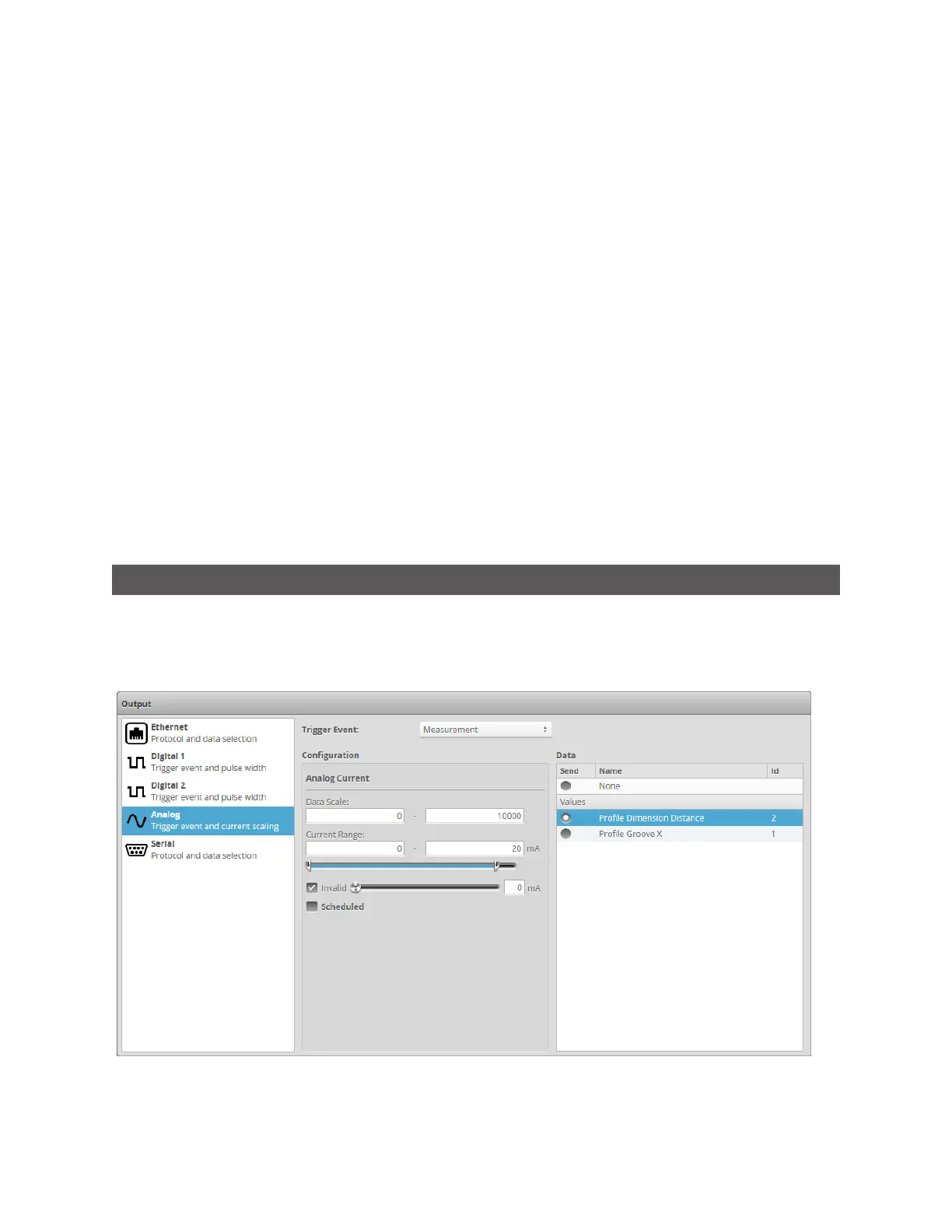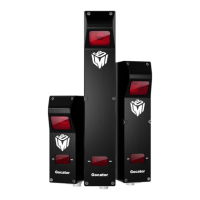Gocator 2300 & 2880 Series
Gocator Web Interface • Output • 216
5. Specify a Pulse Width.
The pulse width determines the duration of the digital output pulse, in microseconds.
6. Specify if the output is Immediate or Scheduled.
A pulsed signal can become active immediately or scheduled. Continuous signal always becomes active
immediately.
Immediate output becomes active as soon as a scheduled digital output (see on page 314) is received.
Scheduled output becomes active at a specific target time or position, given by the Scheduled Digital
Output command. Commands that schedule event in the past will be ignored. An encoder value is in the
future if the value will be reached by moving in the forward direction (the direction that encoder
calibration was performed in).
To output an exposure signal:
1. Go to the Output page.
2. Click on Digital 1 or Digital 2 in the Output panel.
3. Set Trigger Event to Exposure Begin or Exposure End.
4. Set the Pulse Width option.
The pulse width determines the duration of the digital output pulse, in microseconds.
Analog Output
Gocator sensors can convert a measurement result or software request to an analog output. Each
sensor supports one analog output channel.
See Analog Output on page 412 for information on wiring analog output to an external device.
